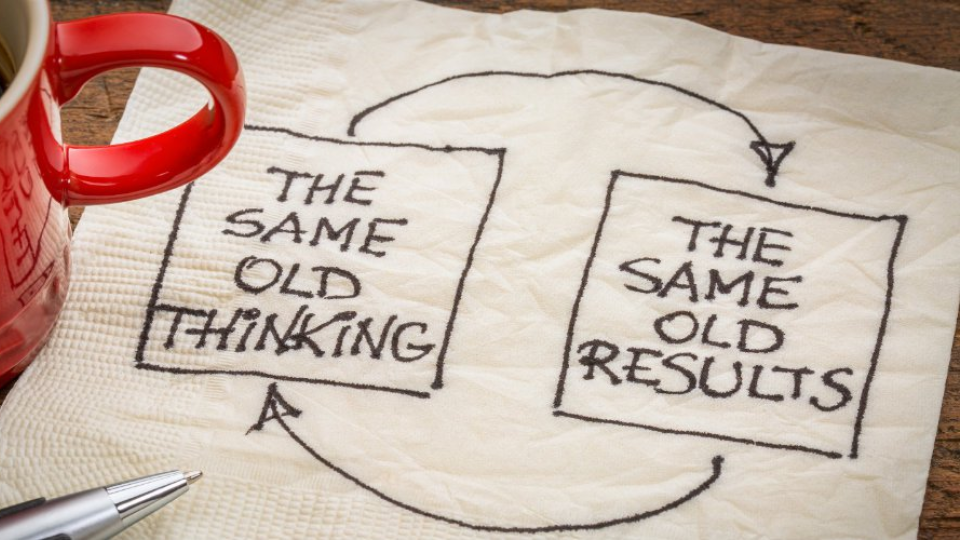
Think about the last time you had a big change imposed upon you. Maybe your company introduced a new (more secure!) way to connect to remote servers, maybe Kellogg’s discontinued your favorite cereal, maybe you had to change to a new team, or (gasp) maybe you were asked to wear a mask at your favorite store.
Whatever the change, most of us react to change with skepticism, hesitancy, reluctance, and maybe even downright hostility. This may seem natural, but why do we react this way?
The reason is that we are humans. We have emotions and biases. In this case, there are 3 cognitive biases that come together Voltron-style to create a default bias towards the status quo:
- Loss Aversion
- Mere Exposure Effect
- Endowment Effect
Let me walk you through each one and then I’ll explain how they work together to sabotage your willingness to embrace change, and what you can do about it.
It’s critical that we understand the forces behind status quo bias. If we want to perform at our best and have top performing teams, we need to embrace continuous improvement. That means being open and willing to change.
Loss Aversion
Given the choice between a 90% chance of winning $100 or a 100% chance of winning $80, the vast majority of people will take the sure thing, even though the expected value (chance of winning * winning amount) is greater with the first option ($90 vs $80).
The reason is that losses hurt more than gains feel good. The thought of potentially losing the first bet and getting nothing (and thereby having lost out on the sure $80) feels much worse than the thought of possibly winning an extra $10. Try it yourself. Which bet would you take?
This bias is so intense that researchers have found that the desire to avoid losses is twice as strong as the desire for gains. In other words, we’d have to change that bet to be a 90% chance of winning $178 (expected value: $160) in order to get people to risk it over a sure gain of $80.
This loss aversion makes us more cautious than pure logic would dictate.
Mere Exposure Effect
Be honest - how often do you forgo something you know for something new? When was the last time you tried a new flavor of Ben & Jerry’s, or a new Spotify channel, or a new type of coffee? The truth is that we like the things we like.
In other words, things tend to grow on us, or familiarity breeds contempt comfort. You like things you know more than things you don’t.
This mere exposure effect is why the Eiffel Tower was initially met with “a storm of protest” (DeVries, 1972) and near universal condemnation, but over time people got used to it and now it is the pride of Paris. It’s also why advertisers bombard you with ads over and over - they know that the more you are exposed to something, the more you will think positively about it.
This effect makes us like things we are used to, and be skeptical of things we aren’t.
Endowment Effect
In 1990, there was a famous study in which some subjects were given a mug, and other subjects were tasked to negotiate with the new mug-owners to purchase their mug. The researchers found that mug “buyers” were only willing to pay $3 for a mug, whereas mug “owners” felt that the mug was worth $7.
What the researchers concluded was that people are more likely to feel strongly about an object they own rather than feel strongly about acquiring that same object when they do not own it. In other words, once you own something, you place a higher value on it than you would if you had to acquire it.
This endowment effect makes us think the things we already have or do are more valuable than similar things we don’t already have or do.
The result: Status Quo Bias
Putting them all together:
Your attachment to the things with which you are comfortable (mere exposure)
or of which you feel ownership (endowment)
Your concern that the new thing will be worse
and you’ll have lost the old thing (loss aversion)
You resist changing to the new thing and prefer to maintain the status quo.
So how do we combat this? After all, to be a high performing, agile organization you must be continuously improving (kaizen), which means we need to find a way to fight status quo bias.
When trying to resist status quo bias yourself, I recommend you:
- Be mindful and when presented with a change and consider if your initial reaction is due to logic or your cognitive biases
- Reframe the change and think what you would advise a friend in the same situation
- Remind yourself about the times where change has worked out for the better, not the worse
If you need to help your team overcome status quo bias, you should:
- Educate them about the benefits of kaizen, or making lots of small incremental improvements
- Address their fears to bring them out into the open so they can be recognized as driven by cognitive biases, not logic
- Shrink the change as much as possible to make it seem less scary. Focus on incremental, not big bang, changes.
- Work with your team to collaboratively draft a change plan so they are bought-into the change and it’s something they can own
- Treat every change as an experiment, with clear success metrics and the option to abandon the change if it doesn’t work out (thereby minimizing loss aversion).
Once you are aware of the nefarious forces causing the status quo bias, you can start to combat them and become truly agile.
This article was adapted from a 5 minute lightning talk I gave at Appian in 2018. You can watch the video and download the slides.